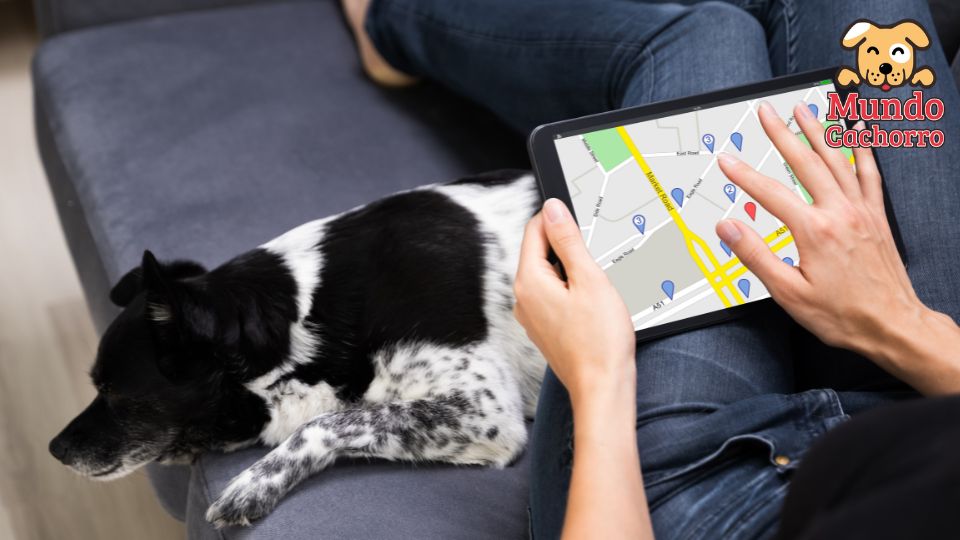In an era where technology is advancing by leaps and bounds, the welfare of our pets has not been left out of this progress. GPS for dogs has become an essential tool for owners concerned about the safety and control of their four-legged companions.
It is no longer just a matter of having a well-trained dog or taking it to the vet regularly, but of having tools to track its location in real time and avoid dangerous situations.
This advancement not only makes life easier for owners, but also provides an additional layer of security that can make a difference in critical situations.
Indice
The need for pet safety
Dogs, by nature, are curious animals.
Their instinct to explore can lead them to wander farther than their owners would like. Every year, thousands of dogs are lost around the world, causing distress and despair for both the animals and their owners.
Although there are traditional methods such as collars with identification tags or microchips, these are not always sufficient.
A collar can fall off and a microchip, while useful for identifying the animal, does not provide real-time information about its location.
Tips for caring for your pet if you are going on a trip
It is in this context where the GPS for dogs has become relevant.
This device has transformed the way owners can take care of their pets, offering an effective and affordable solution to keep dogs always reachable.
How a GPS for dogs works
The operation of a GPS for dogs is simple and effective. These devices, which are generally attached to the animal’s collar, use the same geolocation technology as conventional GPS systems. Thanks to orbiting satellites, the GPS can track the dog’s position in real time, sending this information to an application on the owner’s cell phone.
This way, if the dog wanders further away than usual, the owner can immediately know where it is and take steps to retrieve it.
In addition, many dog GPS models allow “safe zones” to be set up.
These zones are delimited areas in which the dog can move freely without triggering an alert. If the animal leaves this predefined zone, the device sends an immediate notification to the owner, allowing him to act quickly. This type of function not only prevents the loss of pets, but can also prevent accidents, such as a dog crossing a busy road.
Additional benefits of GPS for dogs
Beyond simple tracking, GPS devices for dogs offer a number of additional features that can improve the quality of life for pets and their owners.
For example, some models include an activity monitor that records the dog’s exercise levels. This information is invaluable in ensuring that the dog receives the right amount of daily physical activity, which is crucial to its health and well-being.
In dogs with specific medical conditions, this monitoring can help adjust treatments or exercise routines.
Why loud noises can upset your dog
Another significant benefit is the ability to share the dog’s location with others. This is especially useful for families where several people care for the animal or in situations where the dog is lost and the help of other people is needed to find it. Real-time location sharing can significantly speed up the recovery process.
Considerations when choosing a GPS for dogs
When choosing a GPS for dogs, it is important to consider several factors to ensure that the most appropriate device is purchased for the needs of each owner and pet. First, it is crucial to check the device’s battery life. Some models can last several days on a single charge, while others require more frequent recharging.
A long battery life is especially important in situations where the dog might be lost for an extended period of time.
It is also essential to consider the water resistance of the GPS, since dogs are often in contact with water, whether drinking, swimming or simply playing. A device that is not waterproof can easily be damaged, rendering it unusable just when it is needed most. Finally, the size and weight of the GPS are crucial considerations. The device should be small and light enough so as not to be uncomfortable for the dog. The models available on the market vary significantly in this regard, so it is advisable to try several models to determine which one best suits your pet.
The future of GPS for dogs
The development of GPS technology for dogs continues to advance, and the future promises even more innovations.
Expected improvements include devices with longer battery life, integration with other smart devices, and the ability to track a dog’s health in real time.
Combining GPS technology with artificial intelligence could make it possible to anticipate dangerous behavior, such as when a dog is about to run away or when its physical activity indicates a health problem.
In addition, the cost of these devices continues to fall, making them accessible to more people. As more pet owners adopt this technology, the dog GPS industry will continue to grow and improve. Dog GPS has established itself as an indispensable tool for pet care. It offers not only peace of mind for owners, but also increased safety for the animals.
The ability to track a dog in real time, monitor physical activity and set up safe zones are just some of the benefits these devices provide.
With an ever-increasing range of options available on the market, finding the right GPS for every dog is easier than ever. Investing in a GPS for dogs is not only a matter of convenience, but a way to protect those who give us their unconditional love and companionship.








